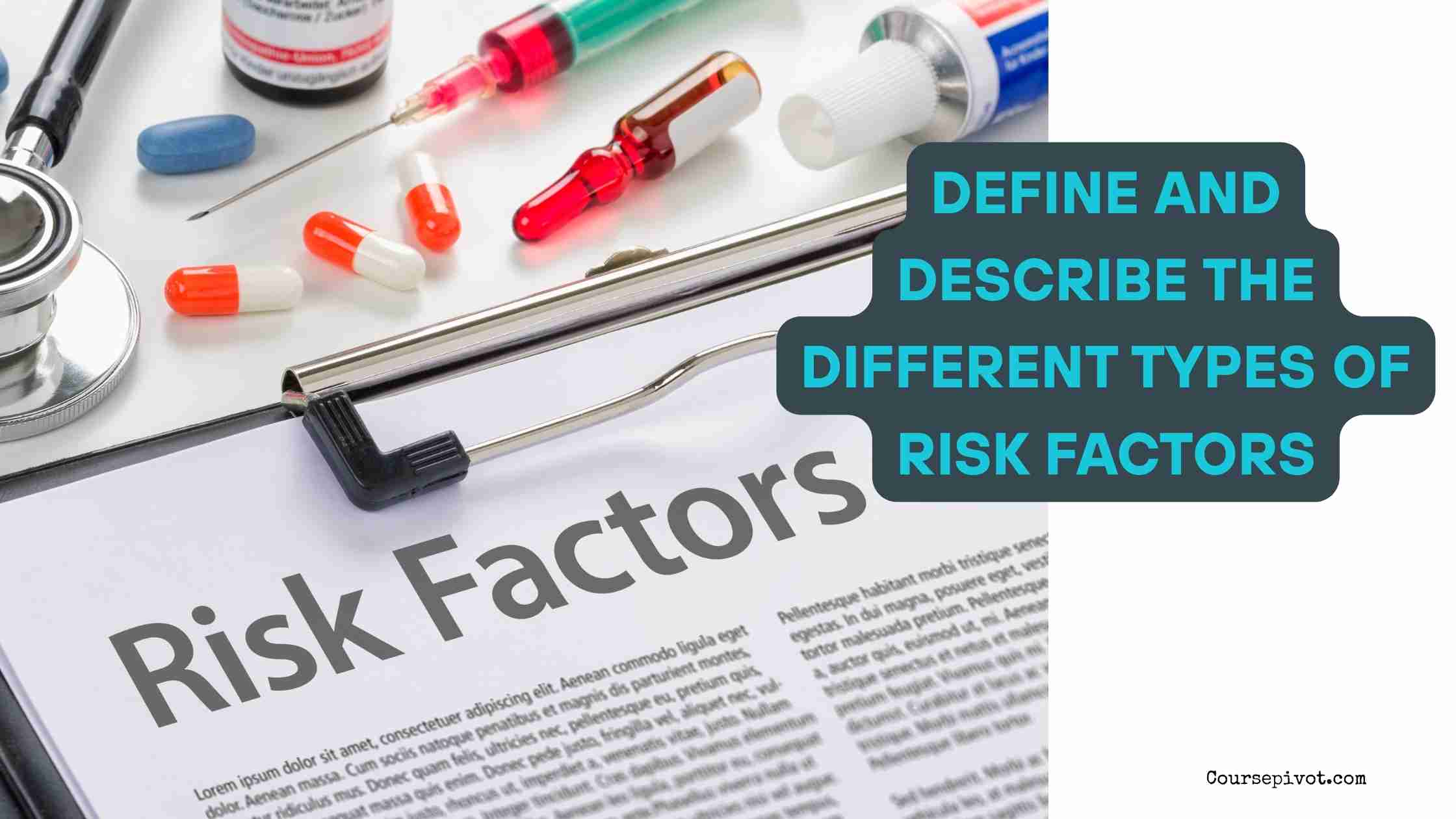
Define and Describe the Different Types of Risk Factors
When it comes to health, safety, and even personal decisions, risk is a word we hear all the time. But what does it really mean to face a “risk”? More importantly, how do we define risk factors, and what are the different types of risk factors that affect our lives?
A risk factor is anything that increases the likelihood of harm, disease, injury, or any negative outcome. Some risk factors are beyond our control. Others we can manage—or completely avoid.
“Not all risk factors are created equal. Some lie in your genetics, while others live in your lifestyle.”
As someone who has taken both health and safety seriously, I’ve come to appreciate how knowing the types of risk factors can help predict, prevent, and prepare. Whether you’re trying to avoid illness, improve performance, or reduce accidents, understanding what increases risk is the first step to reducing it.
Table of Contents
In this article, we’ll define what a risk factor is, break down the different types of risk factors, and explain why identifying them is critical in healthcare, public safety, and everyday life.
What is a Risk Factor?
A risk factor is any attribute, behavior, condition, or exposure that increases the probability of a negative outcome.
This could mean a higher chance of:
- Developing a disease
- Being injured
- Experiencing a poor outcome in treatment or recovery
- Engaging in harmful behavior
Risk factors help professionals assess who is vulnerable, why, and how to intervene early.
Now, let’s explore the different types of risk factors.
Types of Risk Factors: Explained and Categorized
1. Behavioral Risk Factors
These are tied to personal habits, choices, and actions. They are modifiable, which means they can be changed.
Examples include:
- Smoking
- Poor diet
- Physical inactivity
- Substance abuse
- Unsafe sex
Behavioral risk factors are among the leading causes of chronic diseases, such as heart disease, diabetes, and certain cancers. The good news? They’re usually within your control.
- Read our blog on 10 Reasons why Electric Cars are Bad for the Environment
2. Environmental Risk Factors
These involve external conditions and surroundings that influence risk. They may or may not be within a person’s power to change.
Examples:
- Air or water pollution
- Exposure to toxic chemicals
- Noise pollution
- Poor housing or workplace conditions
- Secondhand smoke
Environmental risk factors often require policy change or community action to address.
3. Genetic or Biological Risk Factors
These are risks passed down through DNA or linked to physical or biological traits. They are usually non-modifiable.
Examples:
- Family history of disease (e.g., breast cancer, diabetes)
- Age
- Sex (certain conditions affect men or women differently)
- Genetic disorders or mutations
Though you can’t change these risk factors, you can manage your lifestyle and get regular screenings to reduce overall impact.
4. Social and Economic Risk Factors
Also known as social determinants of health, these factors include the broader conditions in which people live, work, and interact.
Examples:
- Poverty
- Lack of access to healthcare
- Low education levels
- Unstable employment
- Discrimination
These factors often intersect with behavioral and environmental risks, making them particularly challenging to address without systemic solutions.
- Read our blog on 200 Words with Deep Meaning to Describe a Person
5. Psychological or Emotional Risk Factors
These involve mental health, stress levels, and coping abilities. Emotional health has a strong influence on physical health.
Examples:
- Chronic stress
- Depression
- Anxiety
- Poor coping skills
- Trauma history
Psychological risk factors can contribute to substance abuse, suicide, and even chronic diseases. Mental health care is vital to addressing these risks.
Why Identifying Risk Factors Matters
Understanding the types of risk factors doesn’t just help researchers or doctors—it helps you.
- It tells you what you can change.
- It tells you what to watch for.
- It helps guide prevention, treatment, and healthier choices.
I’ve seen how identifying my own risk factors—like a family history of hypertension—helped me make better lifestyle decisions before it ever became a problem.
Summary of the Key Points
The different types of risk factors include behavioral, environmental, genetic, social, and psychological factors. Some, like diet or smoking, can be changed. Others, like age or family history, cannot.
The benefits of understanding risk factors include knowing what puts you at risk, what you can control, and how to prevent future problems by making informed choices. Identifying these risks is essential for healthier living, smarter planning, and more personalized care.
Cite this article
You can copy and paste your preferred citation format below.
Martin, L. & Arquette, E.. (2025, May 24). Define and Describe the Different Types of Risk Factors. Coursepivot.com. https://coursepivot.com/blog/define-and-describe-the-different-types-of-risk-factors/



